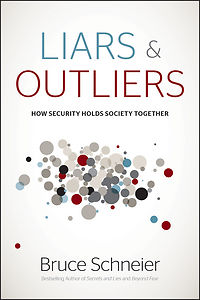John Mueller and his students analyze the 33 cases of attempted [EDITED TO ADD: Islamic extremist] terrorism in the U.S. since 9/11. So few of them are actually real, and so many of them were created or otherwise facilitated by law enforcement.
The death toll of all these is fourteen: thirteen at Ft. Hood and one in Little Rock. I think it’s fair to add to this the 2002 incident at Los Angeles Airport where a lone gunman killed two people at the El Al ticket counter, so that’s sixteen deaths in the U.S. to terrorism in the past ten years.
Given the credible estimate that we’ve spent $1 trillion on anti-terrorism security (this does not include our many foreign wars), that’s $62.5 billion per life [EDITED: lost]. Is there any other risk that we are even remotely as crazy about?
Note that everyone who died was shot with a gun. No Islamic extremist has been able to successfully detonate a bomb in the U.S. in the past ten years, not even a Molotov cocktail. (In the U.K. there has only been one successful terrorist bombing in the last ten years; the 2005 London Underground attacks.) And almost all of the 33 incidents (34 if you add LAX) have been lone actors, with no ties to al Qaeda.
I remember the government fear mongering after 9/11. How there were hundreds of sleeper cells in the U.S. How terrorism would become the new normal unless we implemented all sorts of Draconian security measures. You’d think that—if this were even remotely true—we would have seen more attempted terrorism in the U.S. over the past decade.
And I think arguments like “the government has secretly stopped lots of plots” don’t hold any water. Just look at the list, and remember how the Bush administration would hype even the most tenuous terrorist incident. Stoking fear was the policy. If the government stopped any other plots, they would have made as much of a big deal of them as they did of these 33 incidents.
EDITED TO ADD (8/26): According to the State Department’s recent report, fifteen American private citizens died in terrorist attacks in 2010: thirteen in Afghanistan and one each in Iraq and Uganda. Worldwide, 13,186 people died from terrorism in 2010. These numbers pale even in comparison to things that aren’t very risky.
Here’s data on incidents from 1970 to 2004. And here’s Nate Silver with data showing that the 1970s and 1980s were more dangerous with respect to airplane terrorism than the 2000s.
Also, look at Table 3 on page 16. The risk of dying in the U.S. from terrorism is substantially less than the risk of drowning in your bathtub, the risk of a home appliance killing you, or the risk of dying in an accident caused by a deer. Remember that more people die every month in automobile crashes than died in 9/11.
EDITED TO ADD (8/26): Looking over the incidents again, some of them would make pretty good movie plots. The point of my “movie-plot threat” phrase is not that terrorist attacks are never like that, but that concentrating defensive resources against them is pointless because 1) there are too many of them and 2) it is too easy for the terrorists to change tactics or targets.
EDITED TO ADD (9/1): As was pointed out here, I accidentally typed “lives saved” when I meant to type “lives lost.” I corrected that, above. We generally have a regulatory safety goal of $1 – $10M per life saved. In order for the $100B we have spent per year on counterterrorism to be worth it, it would need to have saved 10,000 lives per year.
Tags: 9/11, fear, risk assessment, risks, terrorism
Posted on August 26, 2011 at 6:26 AM •
57 Comments
